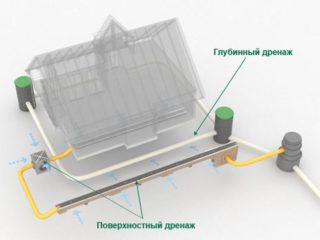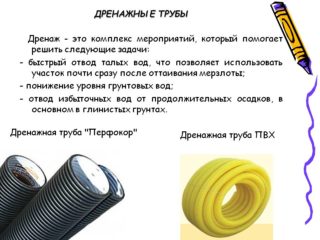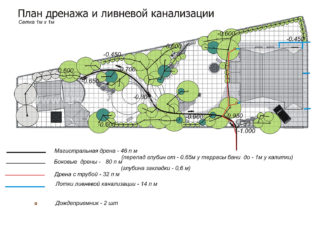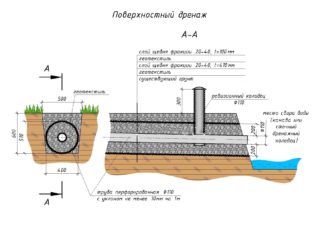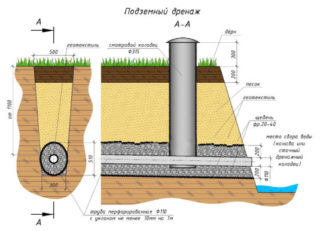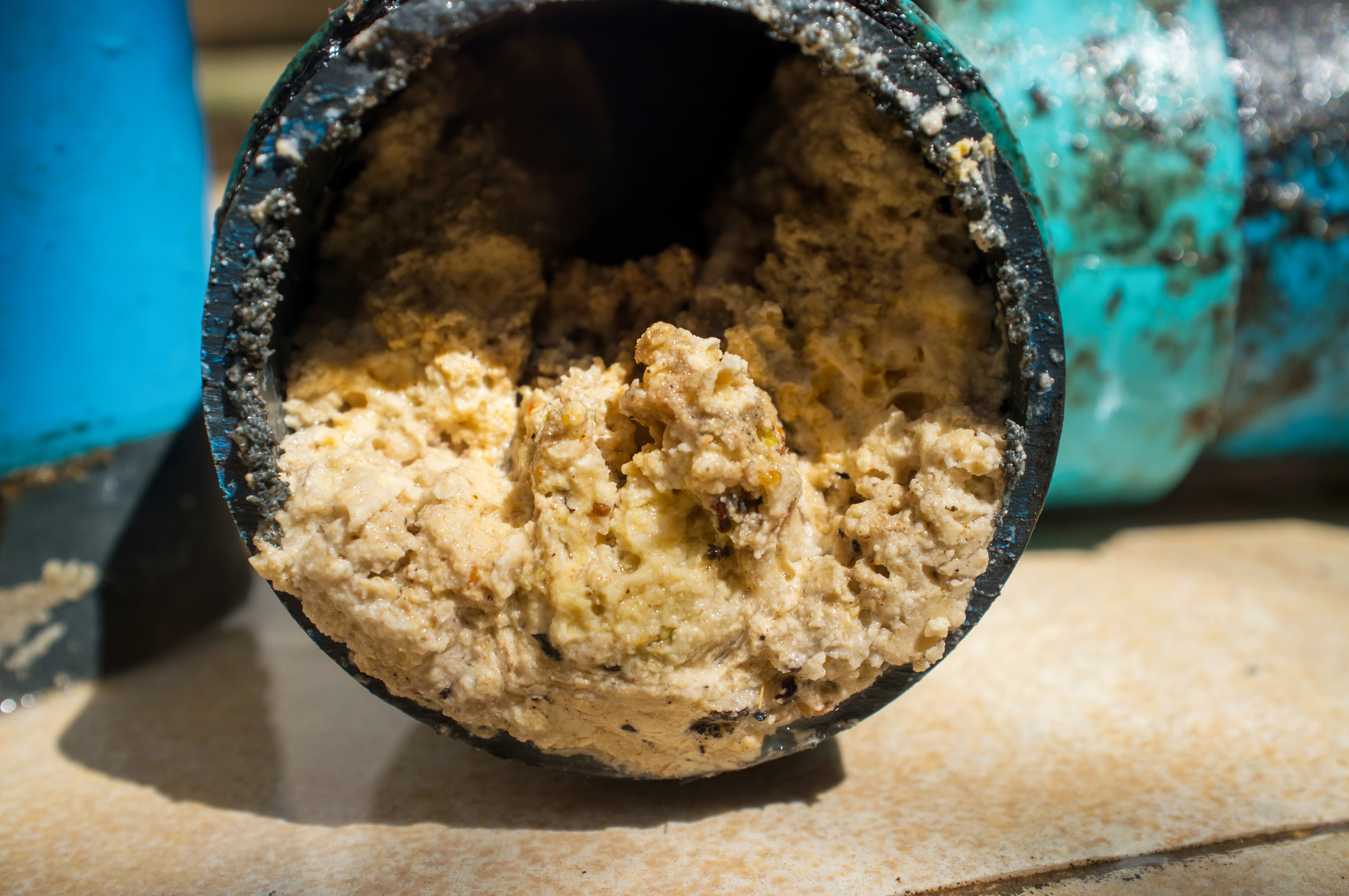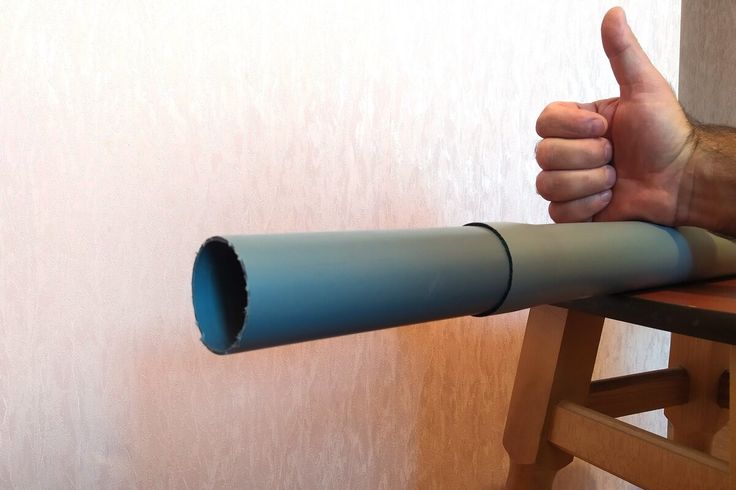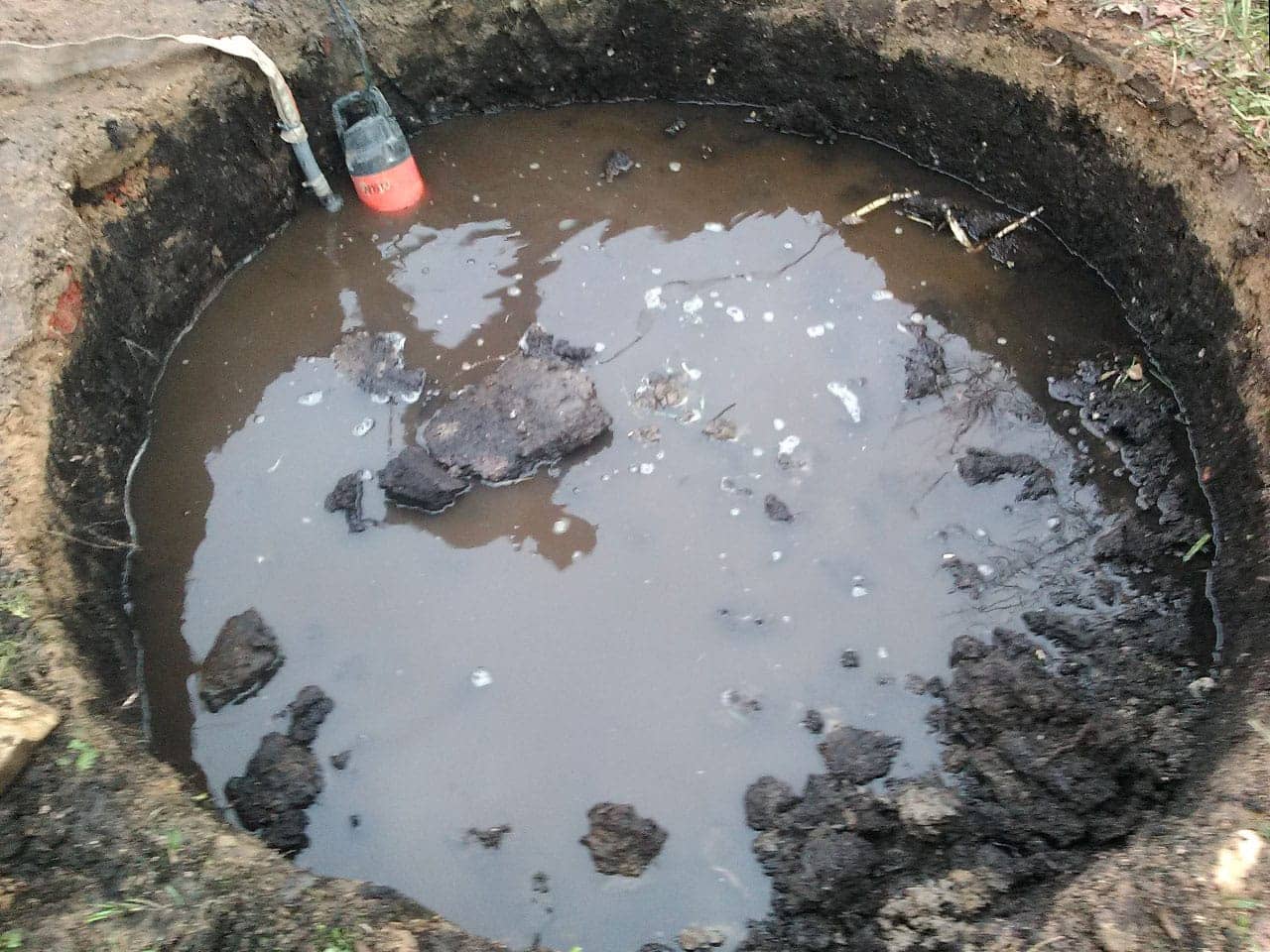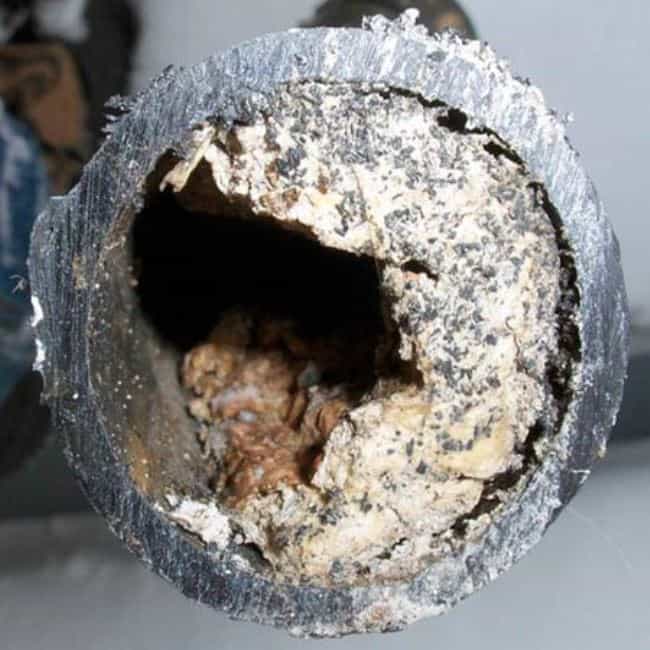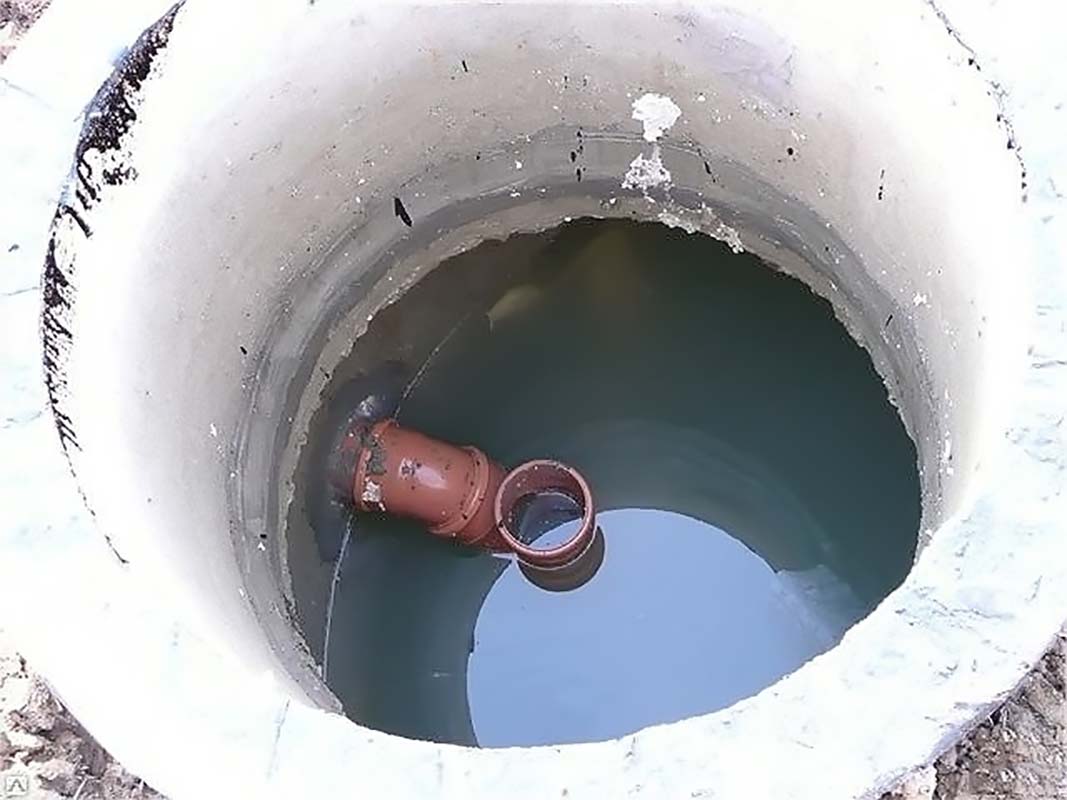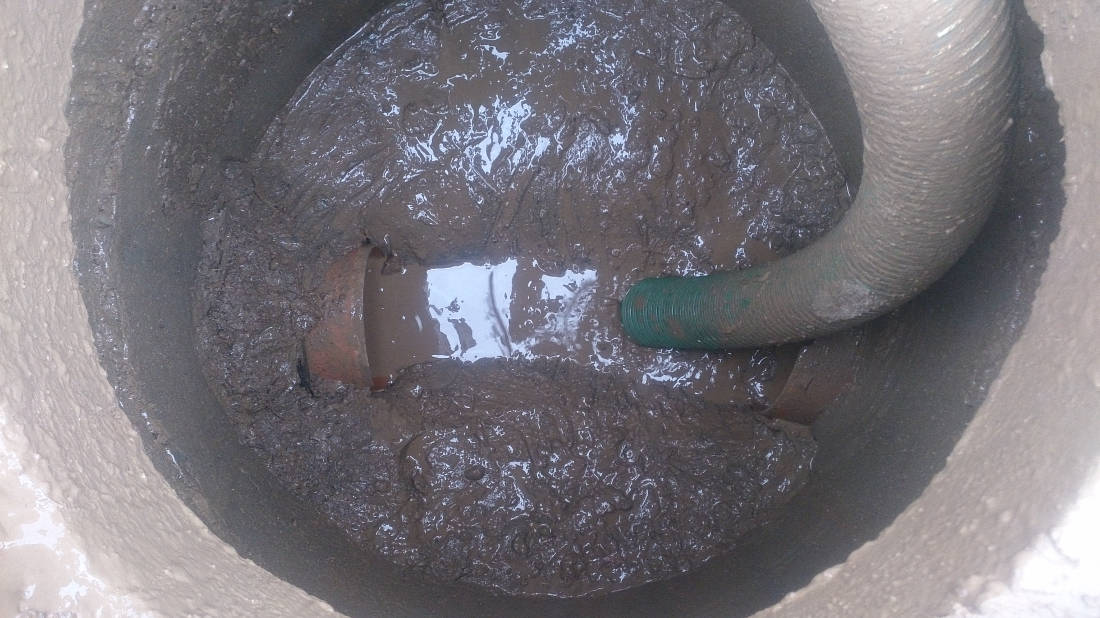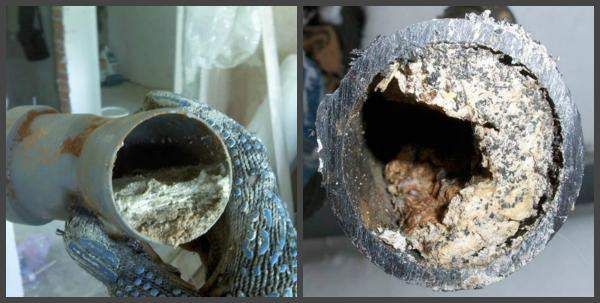Reliable drainage of the soil protects all construction sites from the negative effects of moisture and guarantees a good harvest with proper crop care. To achieve such results, you need to make a drainage system at the summer cottage with your own hands or use the services of professionals, and even at the stage of building a house, or at least before planting plants in the ground.
Types and arrangement of drainage systems
- Closed type (deep). It is located below the groundwater level and is capable of removing large volumes of moisture from the site. It is assembled from special perforated plastic pipes. Communication is the branching of drains in the ground throughout the entire site. And according to the law of communicating vessels, all the water eventually gets into a special receiver. This can be either a closed tank for further use of the liquid on the farm, or a large drainage pit.
- Open type (surface system). It is also called stormwater. Here the channels are located flush with the top point of the ground on the site. The main task of such a system is to collect and quickly drain rain / melt water from the site.
In turn, surface drainage is also classified according to the principle of the device:
- Linear. Designed to combat large amounts of moisture. Such a system is mounted from trays (gutters) connected in series with each other and protective upper grilles.
- Point. Here, the main role in the collection and disposal of water is played by storm water inlets equipped with a special protective grill. Water first accumulates in them, and then is sent through pipes to the final collection / discharge point.
It is advisable to install sand traps in storm water inlets in order to avoid clogging of the drainage system.
Criteria for choosing a drainage system for a summer residence
- the amount of water on the site - the type of soil and the volume of groundwater;
- the material from which the drainage elements are made.
For high groundwater levels and wetlands with clay / loamy soil, a closed drainage system is the best solution. The water will go down the sleeves towards the receiver. Also, the closed system is ideal for plots located at the low-lying point of the village. One way or another, all the groundwater flows here, which must be removed efficiently.
An open drainage system is suitable for removing rainwater from a building or with a low groundwater level in the country.
With regard to the materials of the elements of open drainage communication, the basic principle works - the higher the load on the system, the stronger they must be. For private use at low loads, polymer trays and grids can be used. For medium to heavy loads, it is advisable to give preference to concrete or cast iron elements.
For a closed system, perforated plastic pipes with a cross section of 63 or 110 mm (depending on the volume of underground water) are purchased. To protect communications from silting, it is better to take pipes immediately in a geotextile or coconut fiber filter.
Design and preparatory work
- The location of the water receiver. She is assigned the lowest side of the site.
- The locations of the storm water inlets and / or the length of the storm gutters / underground pipes.
- Be sure to put on the drawing of the gutter along the entrance gate and along the perimeter of the pool (if any).
- Locations of revision, rotary and drop wells (for a closed system).
If it is planned to insert a storm sewer into a city highway, it is necessary to obtain appropriate permission from the regulatory authorities for this.
Self-installation of the drainage system in the country
Surface linear drainage
For the device of an open linear drainage system, work is performed in the following sequence:
- Trenches are being prepared according to the project. Their depth should be equal to the height of the trays plus 10 cm per sand bed. In width, the channels are also made somewhat large - plus 15-20 cm to the cross-section of the gutter on each side.
- The bottom of the trench is covered with a layer of sand and carefully tamped. At this stage, it is advisable to observe a slope of 5-8 mm for each meter of the collector length.
- Gutters are laid, connecting them in series with each other. All joints are coated with sealant.
- The stacked trays are covered with fine gravel on both sides.
- The finished system is covered with protective grilles.
If cast iron or concrete gutters are laid in the ground, in addition to the sand bed, a layer of concrete mortar 10 cm thick is poured. This should be taken into account when digging trenches. Instead of crushed stone, a concrete mixture is also used.
Deep drainage
- Find out the depth of groundwater and prepare trenches 20 cm deeper than this level. To avoid working in water, it is best to do so during the fall months (October-November).
- During the digging of canals, a slope of 6-8 mm must be observed for each running meter of the system.
- The bottom of the prepared trenches is covered with a sand cushion of 10-15 cm and tamped well.
- Install revision, rotary and drop wells. With their help, in the future, it will be possible to track the work of communication.
- If the pipes are without a geotextile filter, first lay the geotextile so that its edges remain free by 30 cm on each side.
- A layer of fine crushed stone is laid on the textiles. Crushed stone can be tamped lightly, but with care. In order not to damage the filter fabric, as its thickness is only 0.7 mm.
- Drainage pipes are mounted on the crushed stone, connected to each other by special couplings.
- The top and sides of the pipes are covered with gravel and everything is wrapped in geotextile.
- The system is covered with soil, but not rammed. Later, the earth will settle down by itself under the influence of underground moisture and rainfall.
If pipes with a geofabric filter are used in the installation of the system, they can be laid directly on a cushion of sand and gravel. From above, such drains are sprinkled with gravel and covered with soil.
In order for the deep drainage system to work properly, it needs to be flushed or cleaned every 4-6 years. In the first case, special installations are used to supply water under high pressure. Cleaning is carried out using a pneumatic tool with a cleaning attachment.
The timely installation of drainage in the country or in a country house prevents subsidence of the soil, destruction of the stone foundation and the negative impact of the fungus on the building.

